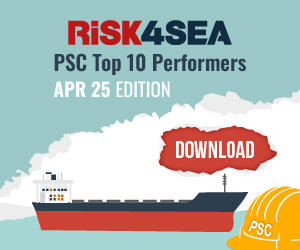The Republic of Liberia has issued marine operations note to provide information and guidance on the application of the new Annex 14 of the CSS Code for new and existing ships designed and fitted for the carriage of containers on deck.
The new Annex 14 of the CSS Code, relating to the “Guidance on Providing Safe Working Conditions for Securing of Containers on Deck” was introduced to the CSS Code by the Maritime Safety Committee, at its eighty-seventh session and subsequently amended at its ninety-fourth session by MSC.1/Circ.1352/Rev.1.
The aim of the new Annex 14 is to ensure that persons engaged in carrying out container securing operations on deck have safe working conditions and in particular, safe access, appropriate securing equipment and safe places of work.
The Guidelines for the preparation of the Cargo Securing Manual were also revised by reference (b) and expanded to include the safe access for lashing of containers, taking into account the provisions of the CSS Code, as amended.
New container ships
New ships, the keels of which are laid on or after 1 January 2015, shall apply the new Annex 14, including provision of a cargo safe access plan in the Cargo Securing Manual. Concerns in applying Annex 14, should be brought to the attention of this Administration.
Existing container ships
Existing ships, the keels of which were laid or which are at a similar stage of construction before 1 January 2015, shall apply Section 4.4 (Training and familiarization), Section 7.1 (Introduction), Section 7.3 (Maintenance); and Section 8 (Specialized Container Safety Design) of new Annex 14 by the first survey related to the Safety Construction Certificate on or after 1 January 2016.
Shipowners are encouraged to apply the principles of relevant guidance contained in the new Annex 14, section 6 (Design) and section 7.2 (Operational Procedures), as far as practicable, with the understanding that existing Ships would not be required to be enlarged or undergo other major structural modifications. As minimum existing ships should comply by the first scheduled drydocking on or after 1 January 2016 as follows:
- section 6.1.3 providing for safe container lashing operations in spaces between containers stows;
- section 6.2.1providing non-slip surfaces on decks used for movement about the ship and all passageways and stairs, delineating walkways by painted lines or pictorial signs, highlighting protrusions on access ways that may give rise to a trip hazard;
- Section 6.2.2.5 providing toe boards (or kick plates) around the sides of elevated lashing bridges or platforms; and section 6.2.2.6 providing for closing of openings in lashing platforms through which people can fall;
- Section 6.2.3.3 providing for fences and handrails to be highlighted with a contrasting color to the background;
- Section 6.2.3.4 providing for protection of unguarded edges on athwartships cargo securing walkways when the hatch cover is removed;
- Section 6.2.4.13 providing for handholds at the top of the ladder to enable safe access to the platform and section 6.2.4.14 providing for manhole openings that may present a fall hazard to be highlighted in contrasting colour around the rim of the opening; and
- Sections 7.2.1.2 and 7.2.1.3 related to protection of openings necessary for the operation of the ship, which are not protected by fencing
Shipowners, Operators of existing ships are encouraged to include procedures for a cargo safe access plan (CSAP) in accordance with chapter 5 of reference (b) implementing the guidelines in section 4.3 of reference (a) at the next revision of the approved Cargo Securing Manual.
LISCR advises operators contact the competent authorities in ports where their ships are calling to see if any additional requirements have been implemented.
Source: LISCR

























































